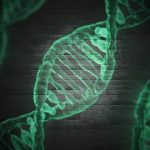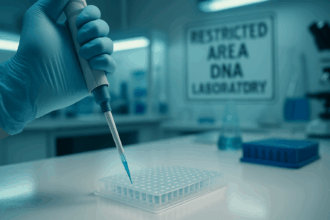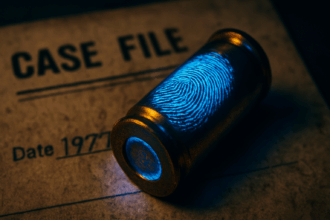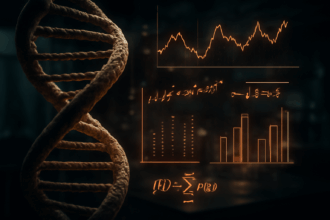Forensic anthropologyForensic anthropology is a special sub-field of physical anthropology (the study of human remains) that involves applying skeletal analysis and techniques in archaeology to solving criminal cases. Read Full Definition is a particular sub-field of physical anthropology (the study of human remains) that involves applying skeletal analysis and techniques in archaeology to medico-legal matters. Forensic anthropologists use physical anthropology techniques to identify human remains that are badly decomposed, burned, skeletal, mutilated, or otherwise unrecognizable, such as airplane crash accidents.
Studying the physical characteristics present on the skeleton, a forensic anthropologist can ascertain an array of information regarding the individuals’ age, gender, stature, race/ethnicity. Besides the physical characteristics of the individual, unique features such as abnormalities in the shape, size, and density of bones are invaluable in documenting past trauma such as broken bones or medical procedures and diseases such as bone cancer. Furthermore, perimortem injuries, such as unhealed fractures, bullet holes, or cuts can reveal the cause of deathThe cause of death refers to the specific injury, disease, or underlying condition that directly leads to an individual's demise. It is a critical determination made by medical professionals, such as Medical Examiners or Coroners, Read Full Definition and time since death. In addition, ancestry, specific activities, diet, and lifestyle are reflected in bones.
Trained forensic anthropologists are also well trained in archeology; they know excavating buried remains and detailed genocide and mass graves documentation. They jointly work with law enforcement agencies and medical specialists like pathologists, forensic dentists, forensic serologists, forensic toxicologists, and ballistic experts. Moreover, often testify in court as expert witnesses.
The methods used to identify a person from a skeleton rely on various anthropologists’ past contributions and the study of human skeletal differences. By collecting thousands of specimens and analyzing differences within a population, estimations can be made based on physical characteristics. Through these, a set of remains can potentially be identified.
Techniques in Forensic Anthropology
Photography, X-ray, and CT Scanning
Bones are photographed and X-rayed, sometimes undergoing CT scanning or examination under high-power microscopes. These methods provide a detailed visual record without altering the remains.
Microscopic Examination
The general shape, size, and structure of bones may be sufficient to determine species. Additionally, microscopic differences in bone structure can be examined. In 1965, Ellis R. Kerley developed a technique to estimate age at death from microscopic features in human compact bone from the femur, tibia, and fibula.
Serological and Chemical Analysis
Recent bones containing proteins may undergo serological tests to establish species.
Sexual Dimorphisms
Sex can be determined by distinctive sexual dimorphisms in bones, particularly the pelvis. The female pelvis has a U-shaped sub-pubic arch, wider sub-pubic angle, and sciatic notch to accommodate childbirth. Skull features can also indicate sex, with male skulls displaying larger, squarer jaws, more prominent supraorbital ridges, and more rectangular eye sockets.
Molecular Analysis
DNA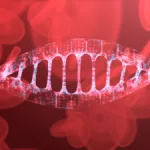 DNA, or Deoxyribonucleic Acid, is the genetic material found in cells, composed of a double helix structure. It serves as the genetic blueprint for all living organisms. Read Full Definition analysis provides highly accurate gender information and positive identification of the deceased. Molecular approaches also assist in ancestry evaluation and species recognition. Mitochondrial DNA in bones and teeth confirms relationships with deceased or living descendants.
DNA, or Deoxyribonucleic Acid, is the genetic material found in cells, composed of a double helix structure. It serves as the genetic blueprint for all living organisms. Read Full Definition analysis provides highly accurate gender information and positive identification of the deceased. Molecular approaches also assist in ancestry evaluation and species recognition. Mitochondrial DNA in bones and teeth confirms relationships with deceased or living descendants.
Isotope Analysis
Stable elemental isotope analysis offers anthropological information related to age and diet and can determine the geographical origin of human remains.
Facial Approximation
Anthropologists can reconstruct the living facial image of a person based on the underlying bone structure of the recovered skull and known standards of facial tissue thickness. This technique, called facial approximationFacial approximation refers to the process of estimating the living facial image of a person from the evidence presented by a recovered skull. Read Full Definition, is used to generate leads for missing persons.
Craniofacial Photographic Superimposition
This technique involves comparing a facial photograph of a missing person with a recovered skull. Photos of the skull are superimposed on photos of missing individuals to identify consistencies between the bone and fleshed form.
Applications of Forensic Anthropology
Forensic anthropology is applied in various contexts, including:
- Criminal Investigations: Identifying remains in murder cases, mass disasters, and war crimes.
- Human Rights Investigations: Documenting and identifying remains in cases of genocide and mass graves.
- Historical Investigations: Analyzing ancient human remains to understand past populations.
Conclusion
Forensic anthropology plays a crucial role in solving mysteries surrounding human remains, providing invaluable insights into the lives and deaths of individuals. Through advanced techniques and interdisciplinary collaboration, forensic anthropologists help ensure justice and uncover the truth behind some of the most challenging cases.
Summary of Key Points
- Forensic anthropology is essential for identifying and analyzing human remains.
- Techniques such as DNA analysis, isotope analysis, and facial approximation are crucial.
- Applications span criminal, human rights, and historical investigations.
What are your thoughts on the advancements in forensic anthropology? Share your insights in the comments below!




